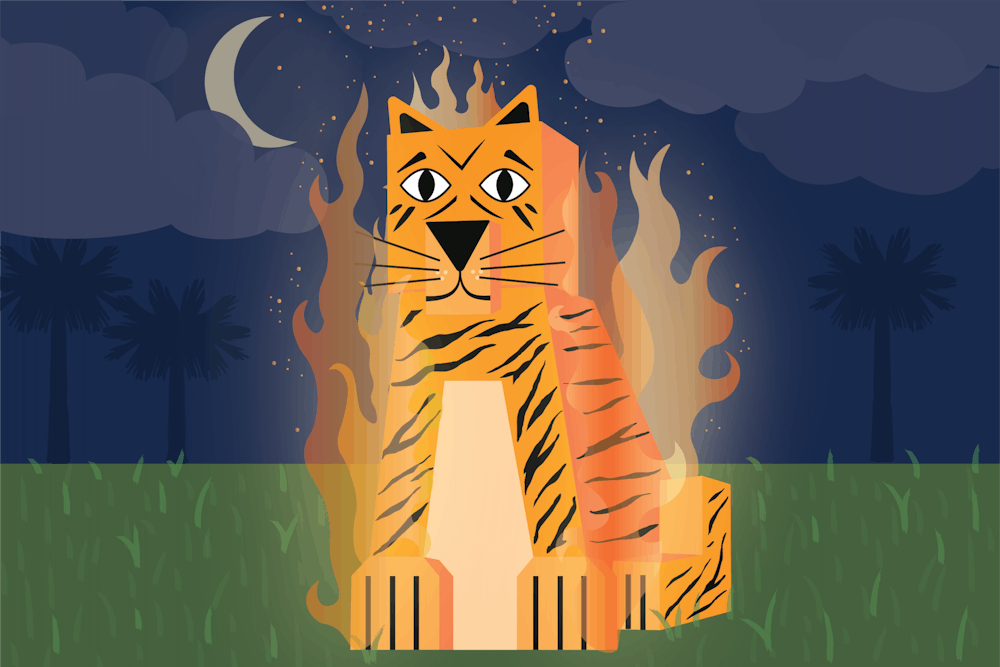In 1902, a hard-fought football game between Clemson and South Carolina ended 12-6, with the Gamecocks taking the victory. The game was an upset, and both fanbases were fired up.
As if the loss itself wasn’t bad enough for Clemson fans, a drawing was made that depicted a Gamecock standing proudly over a beaten tiger. This image sent a mob of Clemson cadets after the fans who bore the symbol, leading to a standoff that almost broke out into a barrage of bullets.
To stop the mob from further damage, an agreement was made: To set the image on fire. As it burned, Clemson fans cheered for the Gamecocks. Today, we honor this event by burning a tiger every year before we play Clemson in the Palmetto Bowl.
For almost 15 years, the American Society for Mechanical Engineers (ASME) has been building the tiger used at the modern Tiger Burn event.
Building this tiger is no easy task. It takes about 30 engineering students to put it together using wood and metal for the skeleton and paper and poultry wire for the decoration.
Ross McDaniel is a fourth-year mechanical engineering student and president of ASME. He said in past years, organizing the engineers was the hardest part of building the tiger, but this year, it seems the design itself is the most intricate part.
Instead of an actual Tiger Burn last year, due to the COVID-19 pandemic, there was a design competition for the Tiger Burn in 2020 to design the tiger for this year. The design for the tiger this year uses more complex shapes than normal, McDaniel said.
“In years past, you would see a very boxy design, so it's basically just a bunch of cubes stacked on top of each other. There's a lot more angles that go into this one,” McDaniel said.
The engineers are set to put the tiger together through Nov. 22, the day of the burn. On the final day, the tiger is transported in pieces to the pep rally, where thousands of students await the cremation of the Clemson tiger.
At the event, USC students gather around the three-story-tall tiger to watch it burn and crumble. As the tiger is lit, a raucous crowd of Gamecocks praises the destruction of the hated Clemson tiger. The band begins to blast the fight song while the smell of burning wood is filling the air. As the tiger becomes a raging fire, "Sandstorm" is played.
McDaniel said the in-person energy is exciting. "I don’t know how it could not be exciting,” he said.
McDaniel said anticipation for the event is building as some Gamecock fans believe South Carolina could beat Clemson in the football rivalry this year.
Clemson has won the last six Palmetto Bowls; one short of their longest win streaks against South Carolina. The burn ends with the South Carolina alma mater as the tiger smolders and dies out.
Taylor Harris is another engineer for the Tiger Burn and a fourth-year mechanical engineering student.
"(The tigers) get better and better every year and just be a part of that starting spot where people can just — future engineers can improve on where we were," Harris said. "I'm just pushing my legacy onto future engineers with this Tiger Burn.”
Courtney Buzan, the assistant director for campus programs, said the building and burning of the tiger is about the “fueling of an awesome student ingenuity and creativity on this campus."
"At the core of what this event is, it is promoting the exploration and research and creativity of the student population,” Buzan said.

